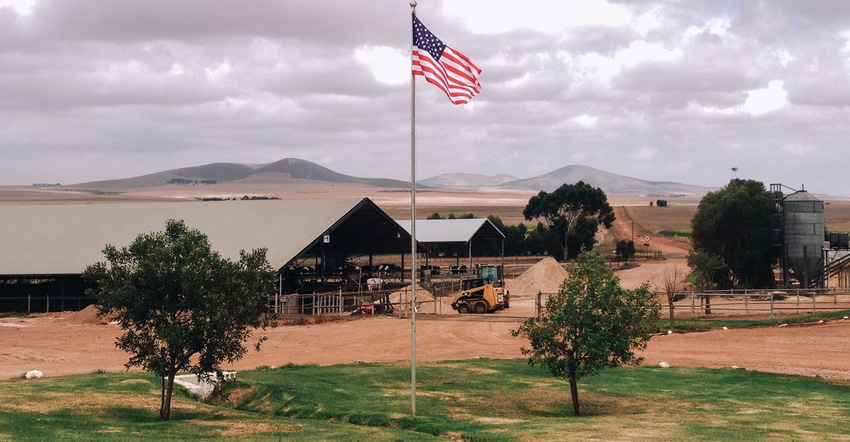April 28, 2022

We all know the classic speech by Paul Harvey called “God Made A Farmer.” His spoken-word piece about our life in agriculture is truly a treasure, and it speaks to my soul every time I hear it.
I bring it up here for a specific reason. Interspersed among the other lines about the busy life of a farmer on the farm are also a few phrases on what farmers do for their community.
As Harvey writes: “God said, ‘I need somebody willing to get up before dawn, milk cows, work all day in the fields, milk cows again, eat supper, then go to town and stay past midnight at a meeting of the school board. … God had to have somebody willing to ride the ruts at double speed to get the hay in ahead of the rain clouds, and yet stop in midfield and race to help when he sees the first smoke from a neighbor’s place. … It had to be somebody who’d plow deep and straight and not cut corners; somebody to seed, weed, feed, breed, and rake and disk, and plow and plant, and tie the fleece and strain the milk, and replenish the self-feeder, and finish a hard week’s work with a 5-mile drive to church.”
He says it because it’s true. We farmers are committed to our communities, and we’re proud of it.
Well, our community has grown beyond just a few miles from our farms. If the pandemic, the war in Ukraine, and the recent ups and down in the world economy have taught us anything, it’s that we are a global community now. In this global community, we are all neighbors. And unfortunately, the metaphorical barn is on fire.
The newest United Nations report on climate change, released April 4, says that harmful global carbon emissions have never been higher in all of human history. The world is on a “fast track” to disaster, says António Guterres, U.N. secretary-general. He says that it’s “now or never” to limit global warming, and “unless action is taken soon, some major cities will be under water.”
Simultaneously, according to the U.S. Farmers & Ranchers in Action, the next 30 years are the most important in the history of agriculture.
“Food production will need to increase by 70% to feed the world by 2050. How do we nourish a growing population while our farmable land is shrinking?” USFRA CEO Erin Fitzgerald asks. She adds that “this is a call to leaders in food, finance and science to be part of the solution to co-create sustainable food systems with U.S. farmers and ranchers.”
Many groups across the agricultural community are answering that call. One such group is Solutions from the Land.
SfL was conceived in 2009 by a team of agriculture, forestry, conservation, academic and industry leaders. It began as a dialogue on what the future of agriculture might look like, co-sponsored by the United Nations Foundation, The Nature Conservancy, Conservation International and Farm Foundation. It has since evolved into a nonprofit operating in eight states, offering national and global advocacy for land-based solutions to world problems.
“When you partner with Solutions from the Land,” the website says, “you provide leadership in solving global challenges like climate change and shaping the future of agriculture and forestry at home and around the world.”
Guess what? I was asked to partner!
Here I was, 5 months postpartum with a new baby, sleep deprived, just getting back into the swing of things at my day job and the farm — and basically trying to hold it all together with baling twine, Jesus and a large cup of coffee — and here was an email from the American Farm Bureau Federation, asking me if I would accept their nomination to be considered as one of eight people who would be chosen to join the new class of farmer envoys for Solutions from the Land.
It took me two days to process everything in my head and to decide how I wanted to approach it.
I thought, why me? Can I do this? Do I even know enough to sound intelligent enough to potentially stand in front of a U.N. committee one day?
Then I thought, well, why not me? Someone has to help, right?
What kept jumping in between these thoughts, though, was the one that said, could I really turn down an opportunity like this? No, I couldn’t. It’s just not in my nature.
I completed my application 20 minutes before it was due, standing in my bedroom with the laptop perched on the top of the dresser, because the baby had finally fallen asleep in the carrier strapped to my chest and I didn’t dare try to sit down at the desk, lest I wake him.
As the computer made the whooshing sound of a sent email, I looked down at my future farmer sleeping on my chest and thought, “I’m doing this for you. For the future you might be farming in.”
The response came two weeks later. I was in!
Wish me luck! Actually, wish all of us luck!
Here’s the list of this year’s other cohorts:
Jocelyn Anderson, Willows, Calif., a fourth-generation almond farmer
Kyle Bridgeforth, Tanner, Ala., of Bridgeforth Farms, a fifth-generation row crop operation
Brad Doyle, Weiner, Ark., a soybean, rice, wheat and grass hay farmer
Ben LaCross, Leelanau County, Mich., a second-generation farmer raising cherries
Amelia Levin Kent, Clinton, La., co-owner of Kent Farms LLC, which raises and markets cattle
Allyson Maxwell, Beaverton, Mich., a farmer raising sugarbeets, corn, soybeans and wheat
Verity Ulibarri, Melrose, N.M., owner and operator of a crop and livestock farm
Watson-Hampton farms with her family on their fourth-generation family farm in Brandywine, Md.
You May Also Like




